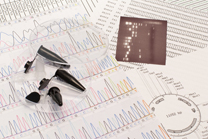Microbial Identification
Analytical Services, Inc. (ASI) provides microbial identification services to clients worldwide. We provide a wide range of capabilities by combing our in-house services (for example, metabolic characterization, genetic sequencing, etc.) and those provided by our affiliated laboratories.
ASI’s microbial identification capabilities include:
API System -
• Bacillus
• Corynebacterium
• Enteric Bacteria
• Lactic Acid Bacteria
• Yeast
Biolog System - Metabolic Identification
Crystal ID System (Gram Negative Bacteria)
DNA Extraction / Genetic Sequencing
Library Generation
Strain Tracking
In-house and with our partner organizations, we identify microorganisms by:
Metabolic Characterization may involve the Biolog system, Crystal ID System, and/or API, all of which are based on an isolate’s substrate utilization, fermentation or respiratory capabilities.
Genetic Sequencing – Isolates are struck for purity, cultured, the DNA extracted, purified and sequenced, and the sequence data analyzed for identification.
Comparative Electrophoresis requires a presumptive identification of your unknown. This process involves an electrophoretic comparison of your isolate’s characteristics (e. g. proteins) to those of known strain(s).
Ribotyping - The DuPont RiboPrint TM system generates the isolate’s genetic fingerprint from the ribosomal RNA (rRNA) operons and adjacent regions of the bacterial genome. The genetic pattern is compared to DuPont’s database for identification.
Library Generation – We have Library Generation capabilities which allow us to create a unique database for your isolates. This may allow identification or tracking of specialized isolates which are not in any standard database.
Strain Tracking – Comparison of isolates (strain tracking) is done using cluster analysis software which generates dendograms and 2-D principle component plots. These plots graphically depict the taxonomic relationships among isolates and are useful for comparing large numbers of isolates or for tracking strains over time.
